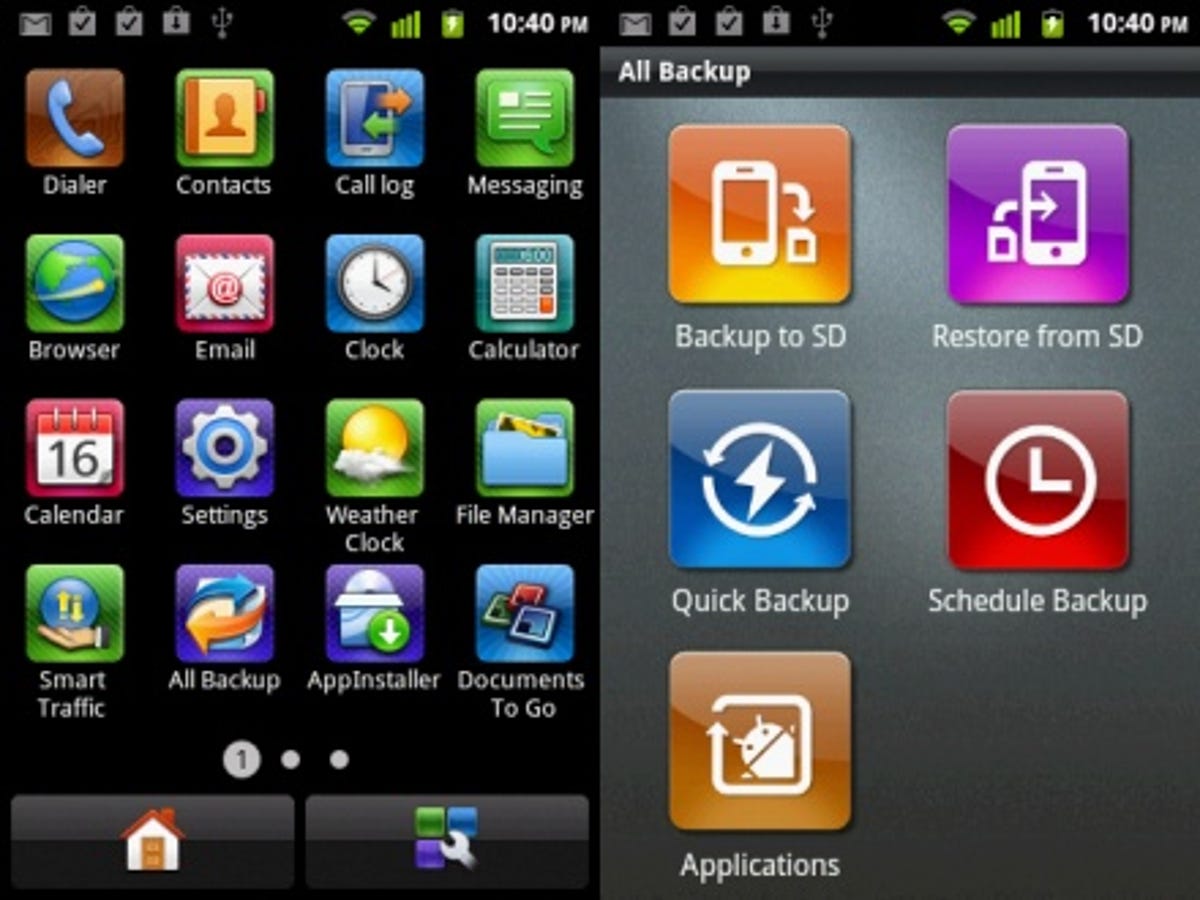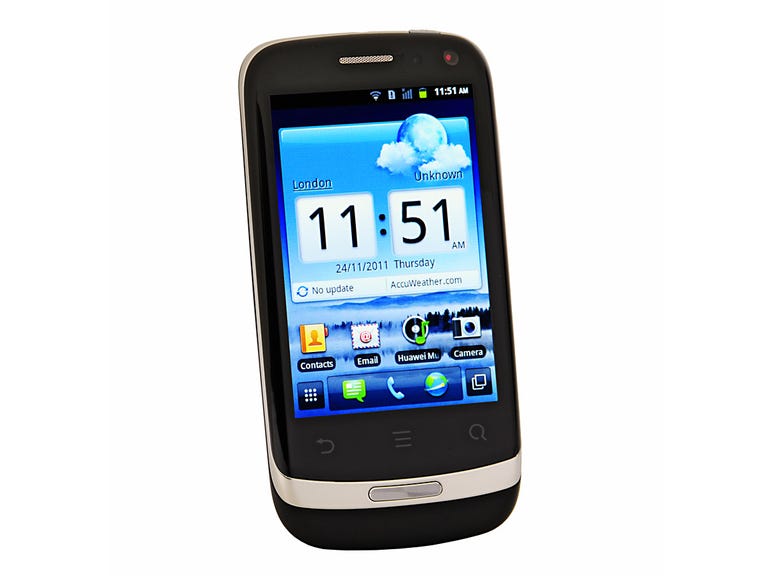 Why You Can Trust CNET
Why You Can Trust CNET Huawei Blaze review: Huawei Blaze
While not quite the leap we were expecting, the Huawei Blaze offers Android 2.3, a capacitive screen and an expensive-looking design.
The Blaze -- also known as the Ideos X3 -- is Chinese manufacturer Huawei's most concerted effort yet to break into the rapidly expanding budget smart phone arena. It offers Android 2.3 and a capacitive touchscreen at a competitive price, but is held back by a weak processor.
The Good
The Bad
The Bottom Line
The Huawei Blaze is available from Phones4U and Tesco Mobile for around £100 on a pay as you go contract.
Should I buy the Huawei Blaze?
The Huawei Ideos really impressed us when we reviewed it last year, but sadly no network or retailer picked it up for UK distribution.
Bearing in mind our feelings about the Ideos, you might imagine we’d give the Blaze an unreserved recommendation; yet that’s not quite the case. The Blaze is undoubtedly a fantastic budget phone, cramming Android 2.3 and a capacitive 3.2-inch touchscreen into a seriously appealing case design -- but there are caveats.
Firstly, the processor just isn’t powerful enough in this day and age. The Blaze may not be the only cheap Android device out there with a weak CPU, but with 2012 looming on the horizon, we’d like to see 1GHz processors becoming the norm in this kind of handset.
The Blaze’s 3.2 megapixel camera is also something of a letdown, as it lacks an LED flash and is rubbish at close-up shots due to the lack of autofocus. As frustrating as these issues are, the fact remains that for around £100, the Blaze represents astonishing value for money.
The competition in this sector has really intensified over the course of 2011 and shows no sign of letting up. While the Blaze makes a slightly less striking impression than the Ideos did, it’s still worthy of investigation if you’re having to watch those pennies.
Interface
The Huawei Blaze is one of an increasing number of budget Android phones running version 2.3 of Google’s popular OS -- otherwise known as Gingerbread.

Offering Android 2.3 for £100 is impressive in itself, but what is even more encouraging is that the Blaze is equipped with an updated iteration of the OS which supports face-to-face video chat via the phone’s front-facing camera.

Huawei has cooked up its own ‘skin’ which sits on top of Google’s Android software. Taking a pinch of inspiration from Samsung’s TouchWiz UI, the Blaze has a vertically-scrolling app drawer, bold and colourful icons and a unique Huawei Social Club widget, which aggregates updates from popular social networks.
Another neat embellishment is the shortcut dock at the bottom of the screen. It comes with shortcuts to text messaging, telephone calls and Internet by default, but you can customise it to your own personal taste. To the left of the dock is the link to your app drawer, while on the right is an exposé button which zooms out to show all five of your home screens, allowing you to jump quickly between them.
Touchscreen
The Blaze's 3.2-inch touchscreen has an overall pixel resolution of 480x320, which sounds underwhelming but isn't all that noticeable due to the small size of the display. It has a pixel density of 180 pixels per inch, which is not a patch on the 267ppi offered by the similarly priced Orange San Francisco 2.
The good news is that the TFT-LCD tech provides a bright, colourful picture, although it only supports 262,000 colours, rather than the 16 million we've come to expect from top Android phones.
Not so long ago, budget touchscreen phones would invariably be lumbered with unresponsive resistive displays which relied on pressure to register user input. Thankfully, times have changed. The Blaze boasts a more responsive capacitive screen, meaning that even slight touches are picked up.
Because the screen is capacitive, multi-touch 'pinch-to-zoom' gestures -- which allow you to use two fingers to zoom in and out of Web pages, images and maps -- are supported. We did, however, experience a noticeable degree of latency on some inputs, and the Blaze's screen sometimes took a couple of pokes before it acknowledged we were actually tapping it.
Design
Considering the Blaze's humble price point, we were really surprised at how well made the phone is. The front of the device is all glossy surfacing and rounded edges, while the back is a single piece of rubberised plastic.
This ensures the phone has plenty of grip when it's in your hand. We also like the fact that the battery cover extends around the front of the phone ever so slightly, covering the entire bottom edge of the device.
Physical inputs on the Blaze are thin on the ground. Aside from the power button and volume rocker, the only other key on the phone is the 'home' button. Instead of being in line with the rest of the Android commands, this sits below them.
The Android commands themselves are touch-sensitive rather than physical buttons. Strangely, they don't light up when the screen is active, which makes them difficult to locate when you're using the phone in the dark.
Processing power
The original Huawei Ideos packed a 528MHz processor, which was hardly spectacular, even by 2010's standards. While the Blaze improves on this by incorporating a 600MHz CPU, the jump in power just isn't enough.
Entry-level Android phones these days should have at least a 1GHz processor, and even then you're going to be way off the pace being set by dual-core phones like the Samsung Galaxy S2 and HTC Sensation.
While it's unreasonable to expect a £100 pay as you go handset to feature the very latest technology, a 600MHz processor is what we'd expect from a phone around the £50 mark (such as the bargain-basement Samsung Galaxy Europa).
The Blaze's lowly CPU means that it can't handle intense 3D games, and suffers from quite a bit of lag and jerkiness when you've got several apps operating at once. It also prevents Adobe Flash support being included in the phone's Web browser.
Internet and Applications
With a 600MHz processor and a 3.2-inch screen, the Blaze is never going to be anyone’s first choice for browsing the Web. Pages take a while to render -- even on a fast Wi-Fi connection -- and you’ll find yourself constantly having to zoom in and out to read small text.As we’ve already mentioned, Flash is not supported by the phone due to the underpowered CPU. This means that sites with Flash-based elements will not display properly. For example, embedded YouTube clips refuse to play, but if you do tap up one, you are taken directly to Android 2.3’s dedicated YouTube app, so it certainly isn’t the end of the world.
With thousands of apps and games already available, the Android Market is getting better on an almost daily basis. The Blaze has access to all of this lovely downloadable content, although some items may not be supported by the phone because of the aforementioned feeble CPU.
Camera, video recording and storage
The Blaze’s 3.2 megapixel camera is something of a disappointment, and feels like a relic from a bygone era. There’s no autofocus or flash, so it’s only good for taking quick shots that will be shared on social networks but not printed out and treasured.The review copy came with a 2GB microSD card (which thankfully can be removed without having to totally power down the phone), but we don’t yet know whether the final retail version will be the same. You'll definitely need some kind of memory card if you want to store music, photos and videos on the device.
Connectivity and battery life
With 3G, Bluetooth and Wi-Fi on board, the Huawei is well-equipped when it comes to wireless connectivity. Because it’s running the latest version of Android, you can use the phone’s 3G connection to create a wireless hotspot, allowing you to tether devices such as the iPad, Nintendo 3DS or Amazon Kindle.The phone’s 1,200mAh rechargeable battery may sound like a bit of a weakling but we were pleasantly surprised by its stamina. Perhaps it’s the modest processor or the diminutive 3.2-inch screen, but the Blaze managed to see the day out even when we were surfing the Web, playing games and listening to music.
Conclusion
We make no effort to hide the fact that we really liked the original Huawei Ideos. It came at a time when Android budget phones were only starting to creep onto the market, and blew our socks off with its low price, capacitive screen and other features. Sadly, the game has changed over the last year, and the Blaze doesn't offer enough of an advancement to make it stand out from the crowd.
Granted, the case design and build quality are exceptional on a phone of this class, but the anaemic processor and petite screen make it look rather pathetic when placed alongside the likes of the similarly-priced Orange Monte Carlo, which boasts a massive 4.3-inch display and a 800MHz CPU.
Still, not everyone desires a hulking monster in their pocket, and the Blaze’s slinky form factor and robust case design are sure to earn it admiring glances. It’s also impressive that Android 2.3 has been factored into this device -- lest we forget, some of Samsung’s budget phones are still stuck on 2.2, and cost more to purchase.
The Blaze may not be able to build on the promise of the Ideos, but it’s yet a viable option if you’re exploring the world of low-price, pay as you go smart phones.


